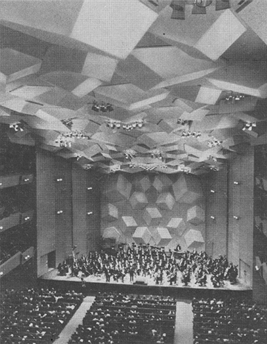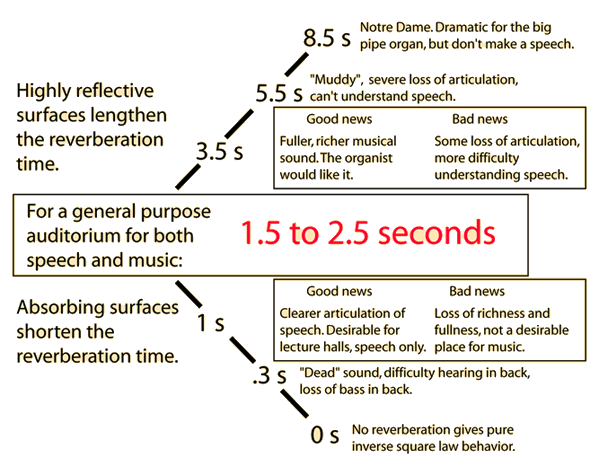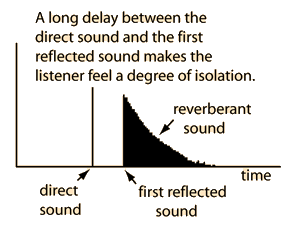Architecture for Acoustics
The architecture of the enclosure should contribute as much as possible to overcoming the inverse square law and the bass loss problem. Some of the general characteristics for a good general purpose auditorium are indicated. .
| Good projection of sound to the rear of the enclosure. | Desirable acoustic properties of the auditorium can be contributed by its architecture. The desired properties at left are correlated with the measurable parameters at right. | Long enough reverberation time. |
| Good clarity and articulation | Reverberation time not too long. | |
| Good balance of low and high frequencies. | Reverb time for low freq. longer than for highs. | |
| Even dispersion of sound. Absence of annoying echoes. | No large reflective surfaces or focusing of sound. | |
| A feeling of "intimacy" or "presence". | Short delay between direct and first reflected sound. |
The above comparison of general description and measurable parameter was inspired by a review article about the opening of the Minneapolis Orchestra Hall published in Time magazine on November 4, 1974.
 | The article gave this general description: "A capacity crowd of 2573 discovered that the new $10 million Orchestra Hall is a winner, with truly superior sound. The term for the way in which a stage projects sound into an auditorium is 'throw'. Orchestra Hall has a throw that even Tom Seaver might envy. ... the new hall also has remarkable even dispersion of sound,... admirable balance and clarity, a striding bass and an exciting musical presence unsurpassed perhaps by any concert hall in the world. ..At times the volume of the orchestra approached the painful - clearly the result of the conductor's understandable desire to show off the hall's dynamic range." |
Auditorium acoustics
| HyperPhysics***** Sound | R Nave |



